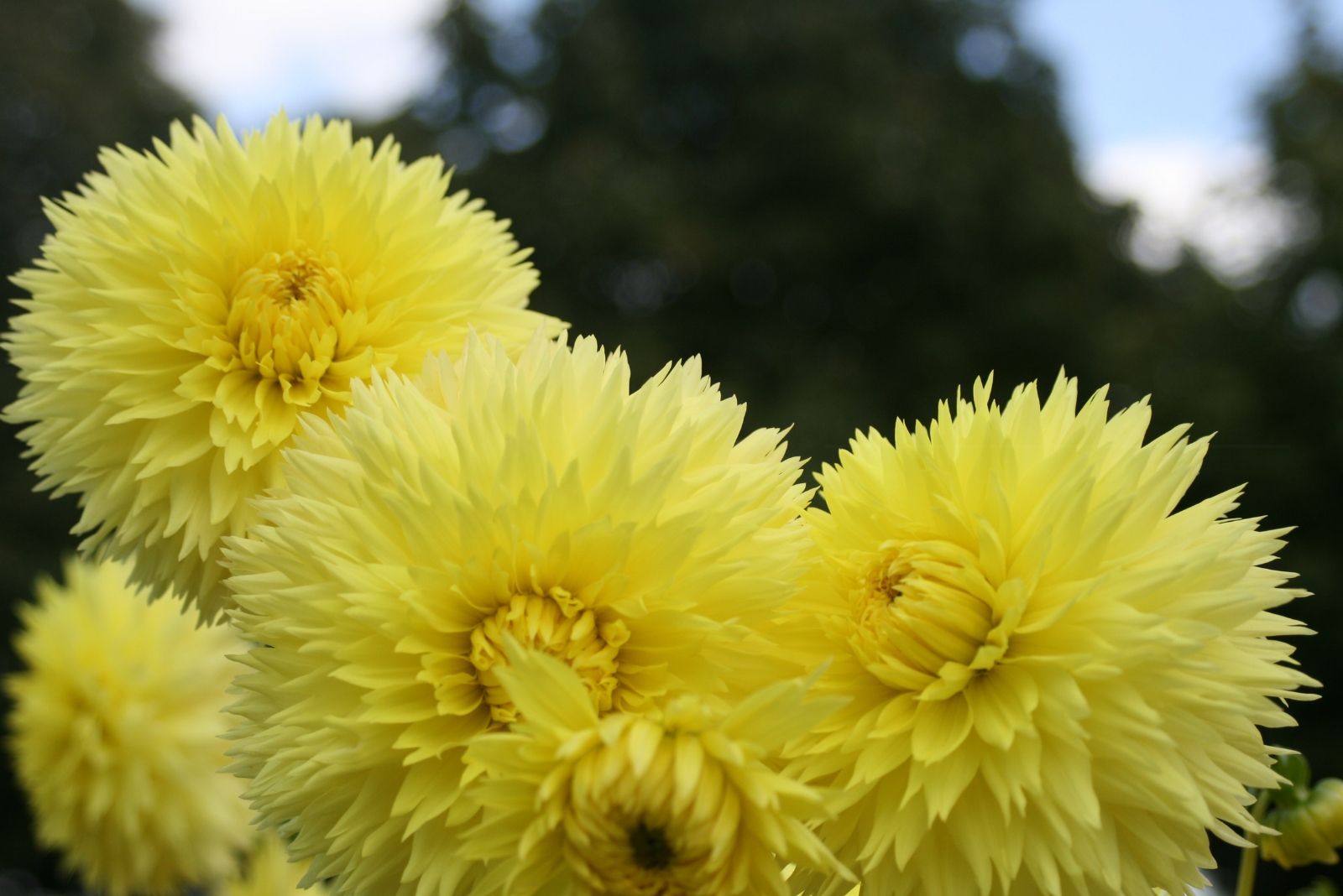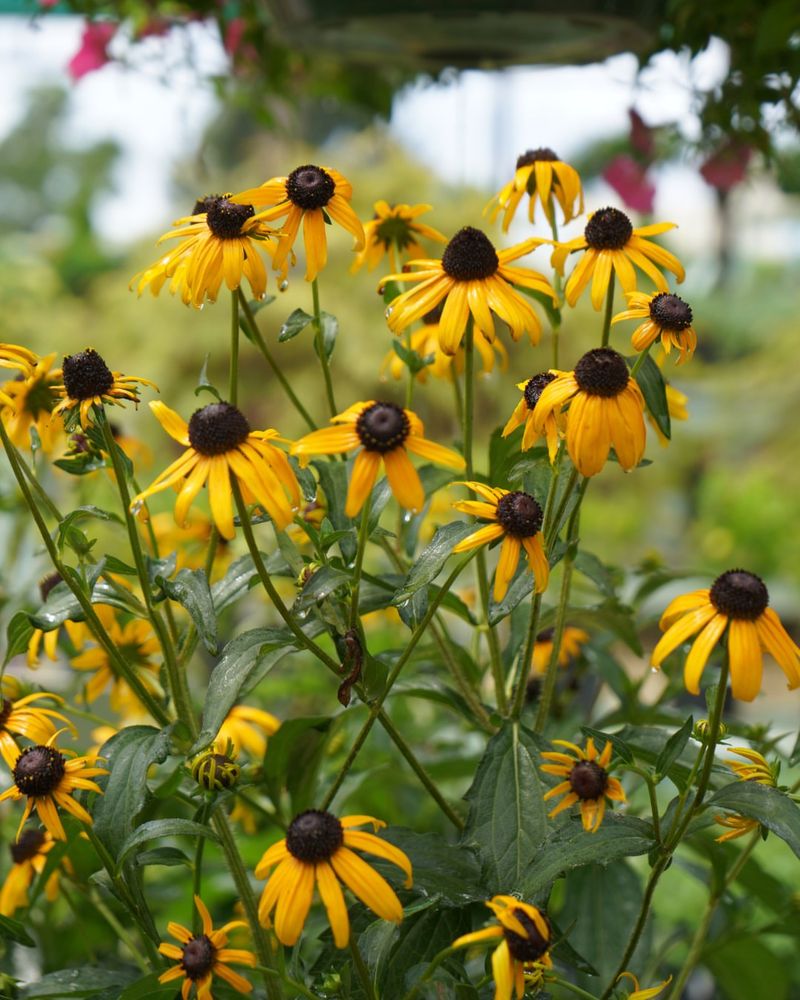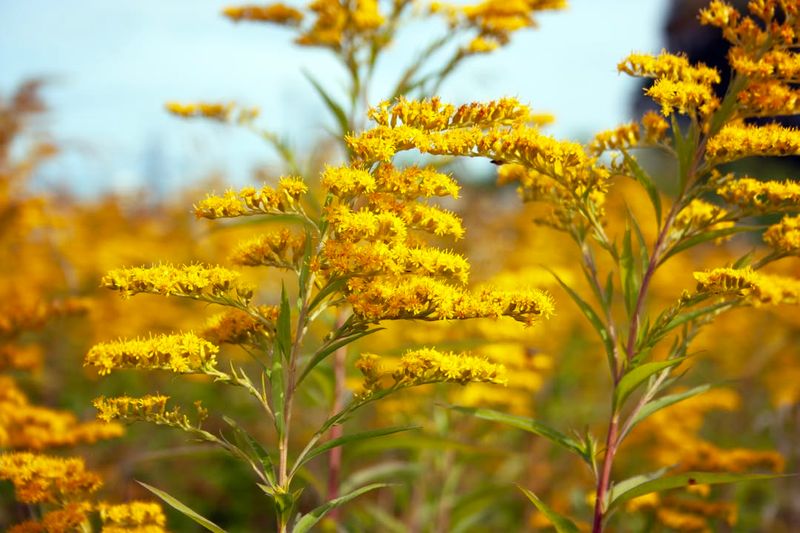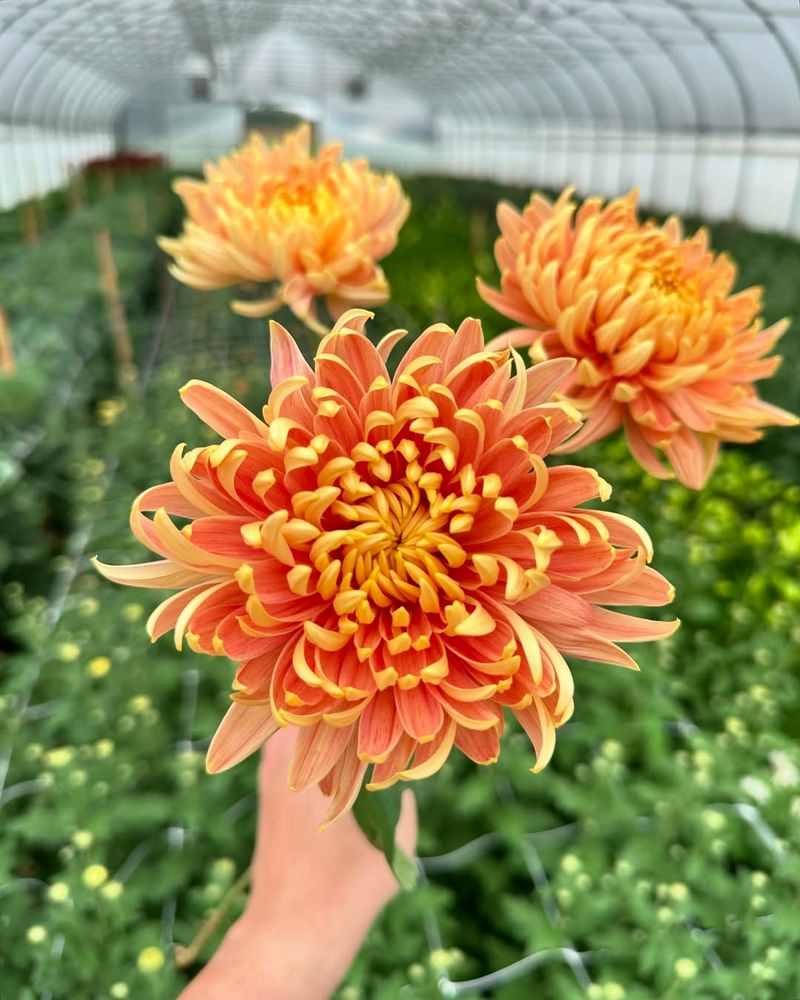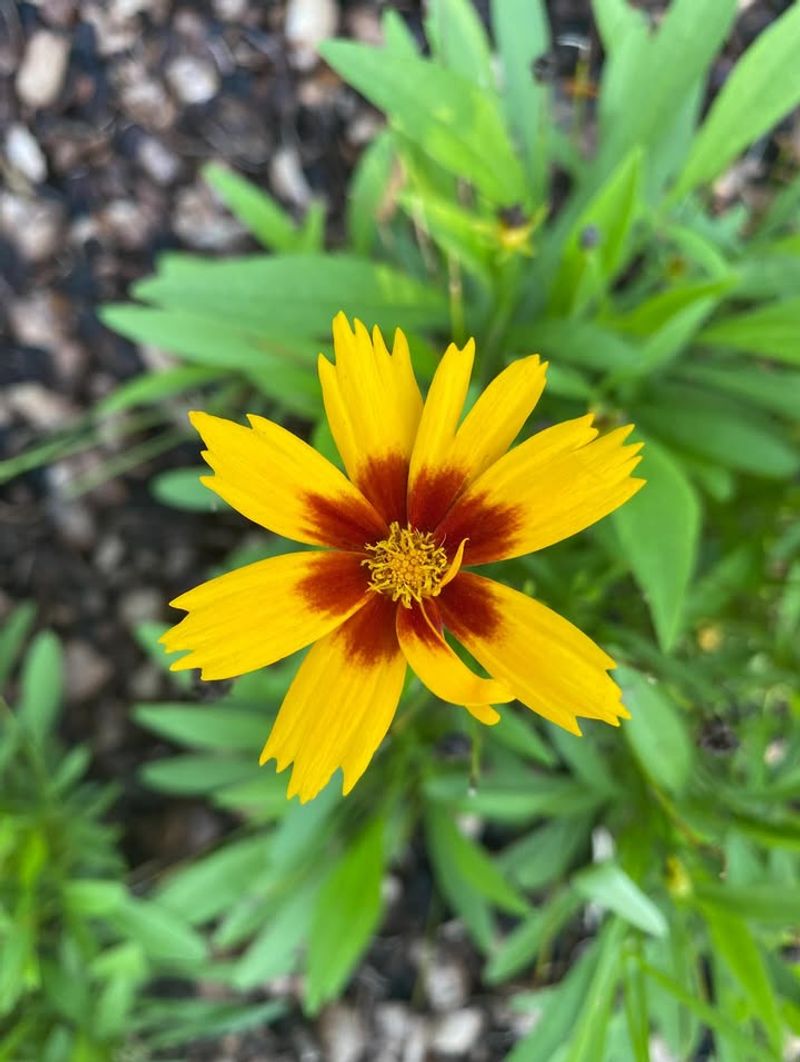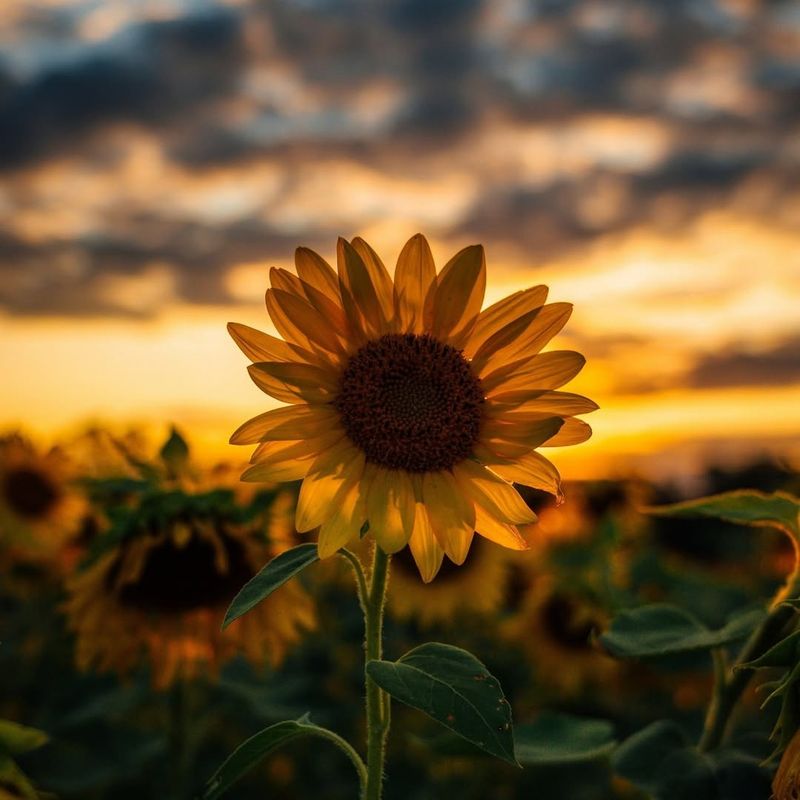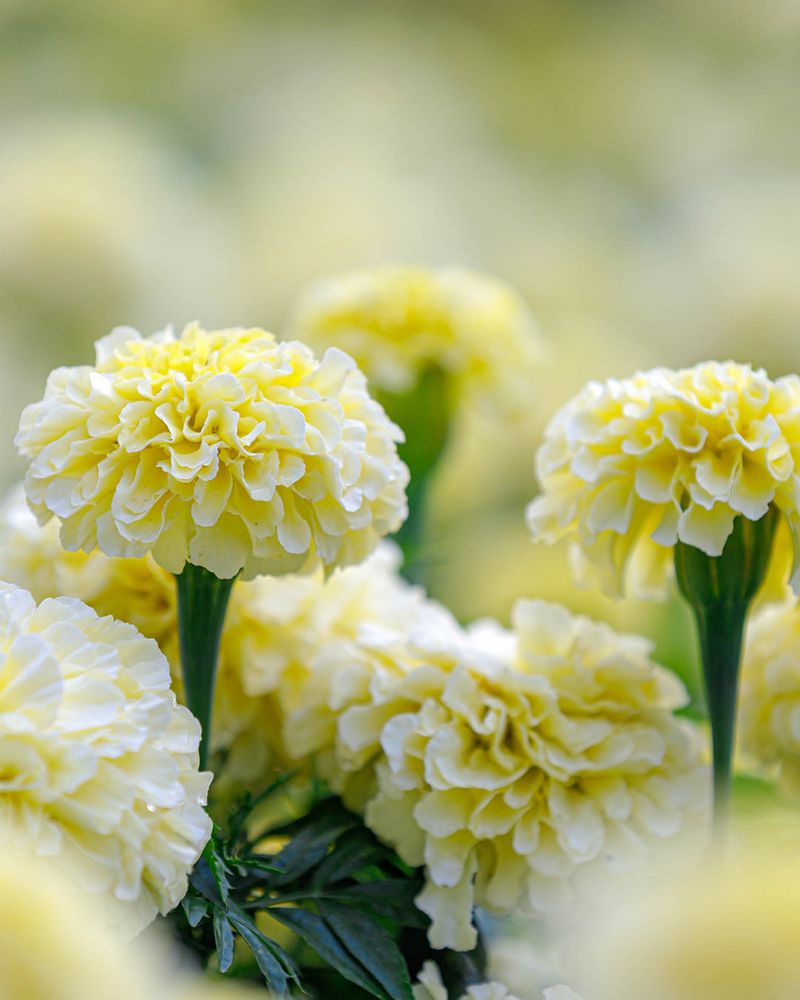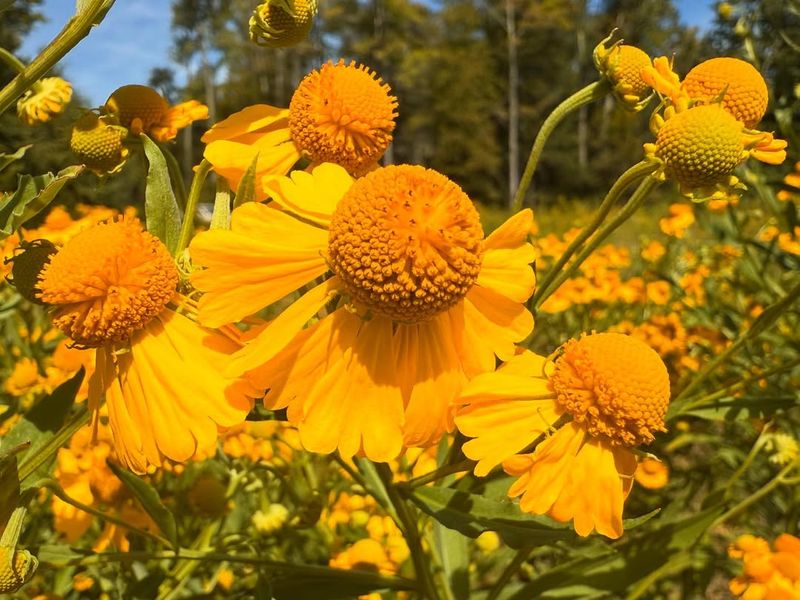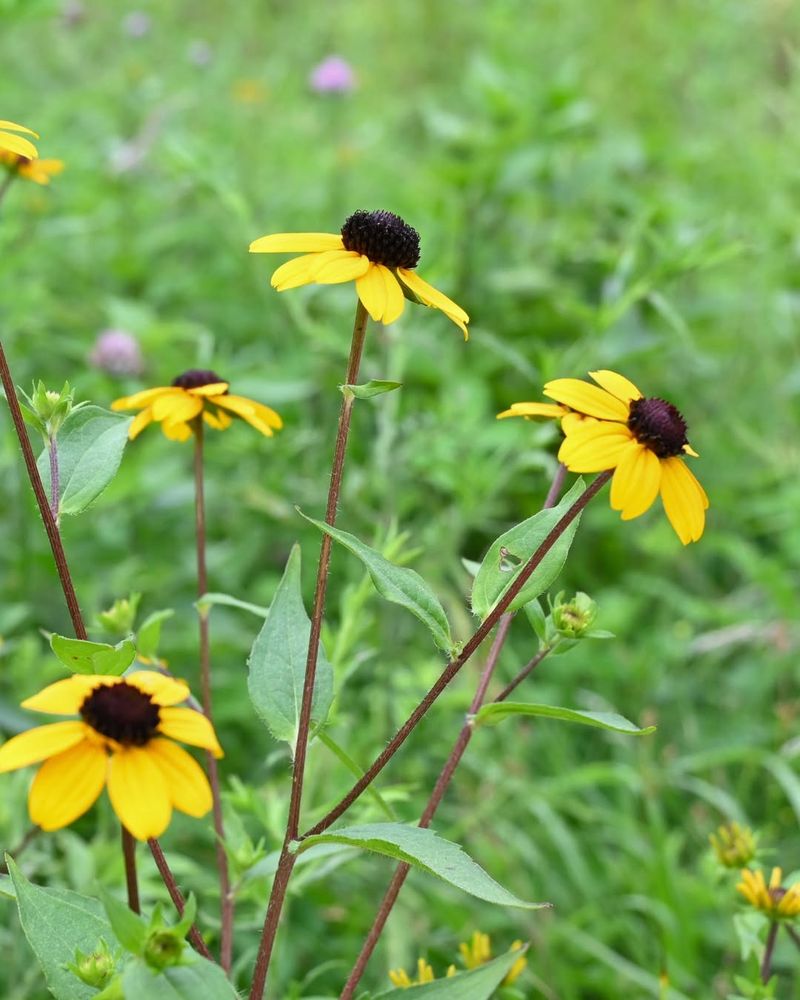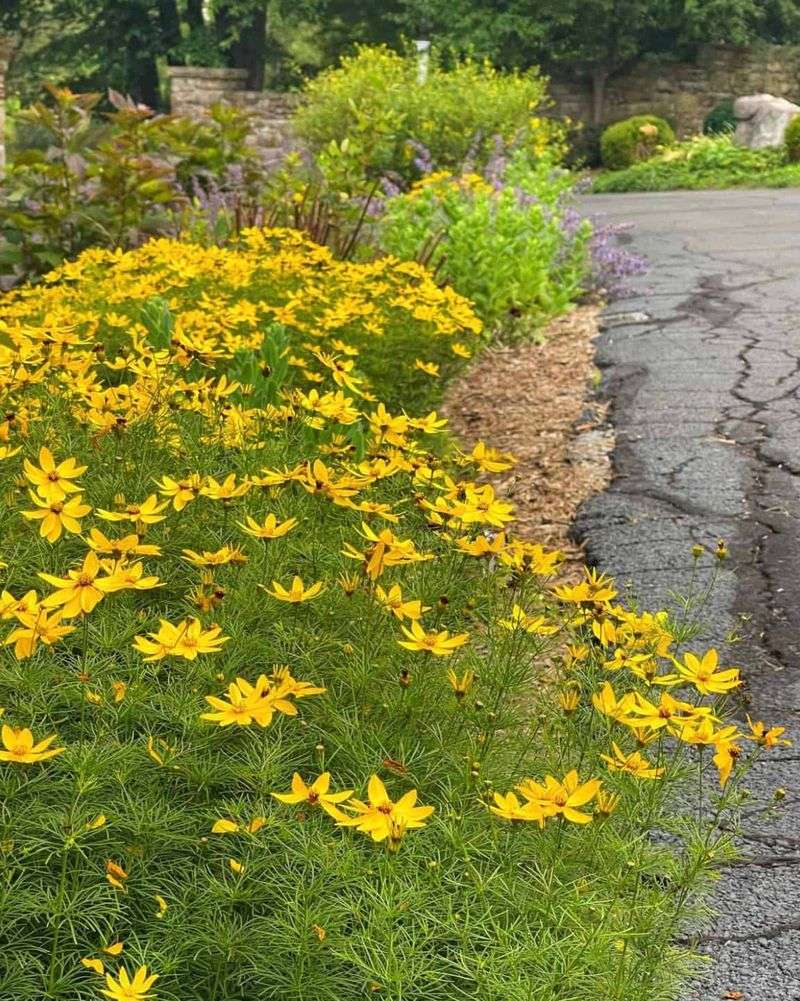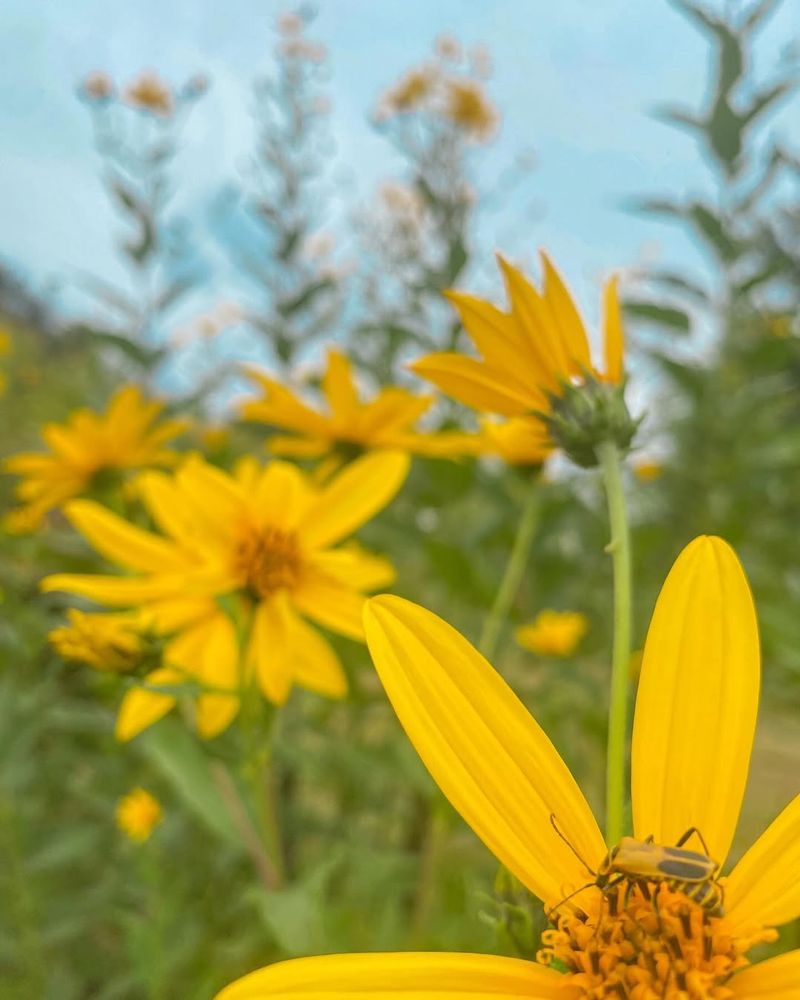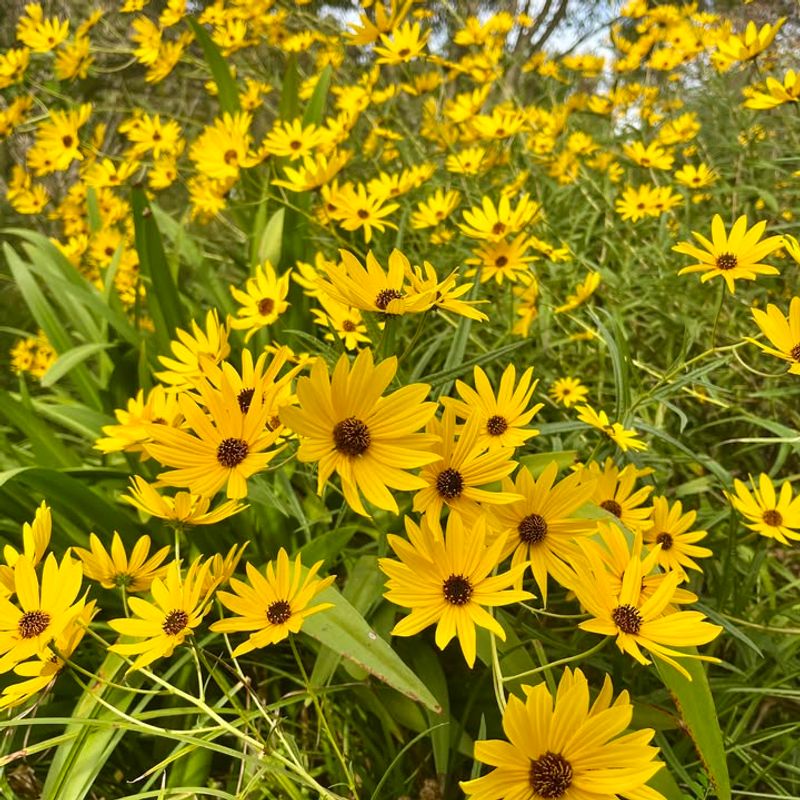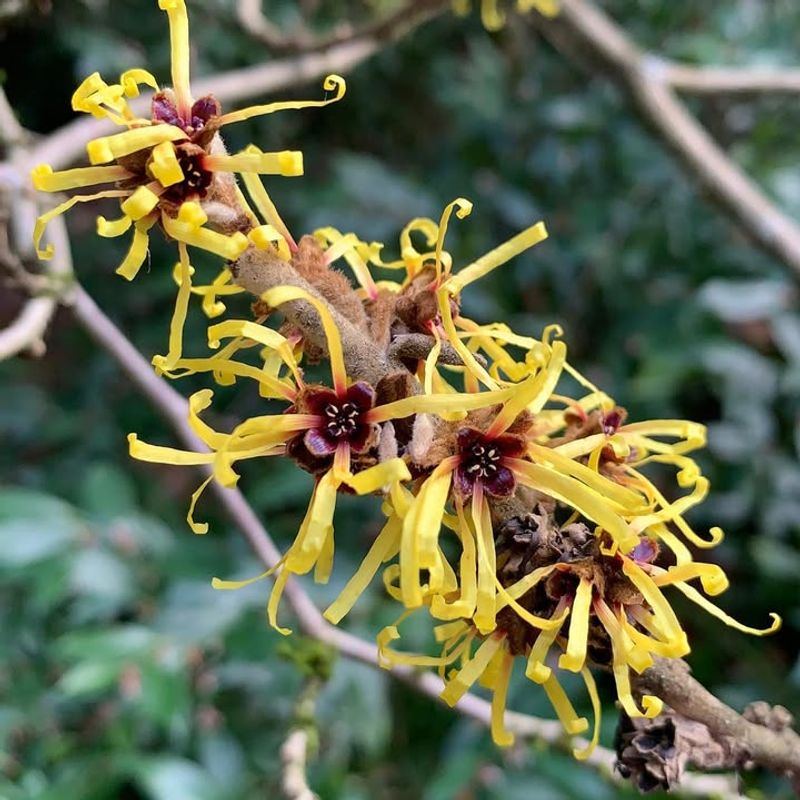When summer fades and cooler weather arrives, most gardens lose their vibrant colors. But North Carolina gardeners have a secret weapon: yellow flowers that keep blooming even as the leaves start to turn.
These sunny plants bring warmth and cheer to your yard right through autumn, making your garden the brightest spot on the block.
1. Black-Eyed Susan
With their cheerful golden petals and chocolate-brown centers, Black-Eyed Susans are North Carolina natives that thrive in fall weather. They grow easily in almost any soil and can handle both sunshine and a bit of shade.
Butterflies love visiting these flowers, making your garden a lively place to watch nature. Plant them once, and they’ll come back year after year without much fuss. Their long stems make them perfect for cutting and bringing indoors too.
2. Goldenrod
Goldenrod gets blamed for allergies, but that’s actually ragweed’s fault! This bright yellow wildflower produces fluffy plumes that light up fields and gardens throughout North Carolina’s fall season.
Pollinators depend on Goldenrod for late-season nectar when other food sources disappear. It grows tall and strong, reaching up to five feet in height. The flowers dry beautifully, so you can save them for winter arrangements and crafts.
3. Chrysanthemum
Everyone calls them mums, and they’re the classic fall flower you see everywhere in October. Yellow varieties range from pale butter to deep gold, giving you plenty of options for your color scheme.
Mums prefer cooler temperatures, which makes them perfect for North Carolina autumns. Water them regularly and pinch off dead blooms to keep fresh flowers coming. They look fantastic in containers near your front door or planted directly in garden beds.
4. Coreopsis
Nicknamed tickseed because of its unusual seeds, Coreopsis produces masses of daisy-like yellow flowers that keep blooming until frost arrives. North Carolina chose this as the state wildflower, so it’s practically made for growing here!
Drought doesn’t bother these tough little plants once they’re established in your garden. They spread naturally to fill empty spaces with golden color. Deadheading spent flowers encourages even more blooms throughout the season.
5. Sunflower
Plant sunflower varieties in late summer, and you’ll have towering yellow blooms when autumn arrives. Their huge flower heads follow the sun across the sky, creating a magical effect in your garden.
Birds, especially goldfinches, flock to sunflowers for the nutritious seeds inside those big centers. Some varieties grow over ten feet tall, while others stay compact for smaller spaces. Kids absolutely love growing these giant flowers and watching them develop.
6. Marigold
Did you know marigolds can help protect your vegetables from pests? Their strong scent keeps certain bugs away, making them useful companions in any garden. Yellow marigolds bloom nonstop until a hard freeze finally stops them.
French and African varieties both offer stunning yellow shades from lemon to orange-gold. They’re incredibly easy to grow from seed or transplants. Plus, their spicy fragrance adds another sensory element to your outdoor space during autumn walks.
7. Sneezeweed
Don’t let the weird name fool you—Sneezeweed won’t make you sneeze! Its cheerful yellow and gold flowers have drooping petals that give them a relaxed, casual appearance. Native to North Carolina, it blooms heavily during September and October.
Hummingbirds and butterflies visit these flowers constantly for nectar. The plants grow in clumps that get bigger each year, creating impressive displays. Wet soil doesn’t bother Sneezeweed, so it works great in spots where other flowers struggle.
8. Rudbeckia Triloba
Sometimes called brown-eyed Susan, this Rudbeckia cousin produces hundreds of small yellow flowers on each plant. The blooms are smaller than Black-Eyed Susans but appear in much greater numbers, creating a cloud of gold.
This wildflower self-seeds enthusiastically, so you’ll have volunteers popping up in future years. It tolerates heat, drought, and poor soil without complaining. The bushy plants reach three to four feet tall, making them excellent background flowers in mixed borders.
9. Dahlia
Dahlias keep producing spectacular blooms right up until frost, and yellow varieties range from pale cream to deep mustard shades. Their flowers can be as small as golf balls or as large as dinner plates, depending on the variety you choose.
These plants need regular watering and fertilizing to perform their best. Staking taller varieties prevents them from flopping over in autumn winds. Cut flowers frequently to encourage the plants to make even more gorgeous blooms for your enjoyment.
10. Tickseed Sunflower
Not to be confused with regular Coreopsis, Tickseed Sunflower (Bidens aristosa) grows much taller and produces cheerful yellow flowers throughout fall. This North Carolina native loves wet areas where many other flowers won’t survive.
The flowers attract dozens of beneficial insects and pollinators to your garden. Plants can reach six feet tall, creating a dramatic vertical element in your landscape. They self-seed readily, so you’ll have plenty of volunteers appearing in spring.
11. Jerusalem Artichoke
Also called sunchoke, Jerusalem Artichoke produces cheerful yellow flowers that look like small sunflowers in late summer and fall. But here’s the bonus: underground, it grows edible tubers that taste nutty and slightly sweet when cooked!
The plants grow incredibly tall, sometimes reaching ten feet, so give them space in the back of your garden. They spread aggressively, so plant them where you can contain their enthusiastic growth. Harvest the tubers after frost for the best flavor.
12. Swamp Sunflower
Native to North Carolina’s wetlands, Swamp Sunflower thrives in moist garden spots where other plants might rot. It produces dozens of bright yellow flowers with dark centers during September and October, creating spectacular fall displays.
Butterflies, bees, and songbirds all benefit from this generous plant. It grows five to seven feet tall with a bushy, full shape. Despite loving moisture, it also tolerates average garden conditions once established, making it surprisingly adaptable for various landscapes.
13. Witch Hazel
Witch Hazel saves its magic for last, blooming in late October and November when almost everything else has finished. The flowers have thin, ribbon-like yellow petals that look like little fireworks exploding on bare branches.
This native shrub tolerates shade better than most flowering plants, making it perfect for woodland gardens. The fragrant blooms smell spicy and sweet, perfuming the cool autumn air. Witch Hazel also offers brilliant fall foliage before the flowers appear, giving you two seasons of beauty.

